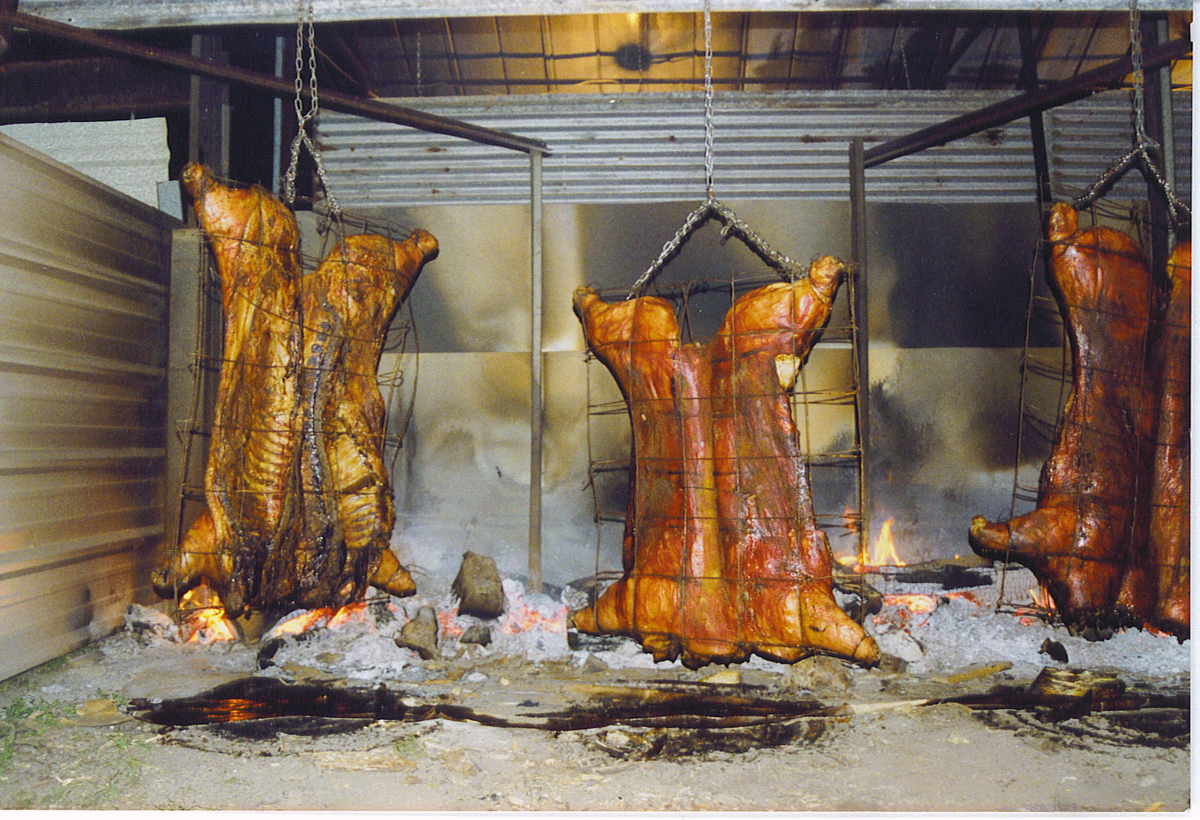| TRADITIONAL BOUCHERIES

Traditionally, many cultures celebrated the boucherie, or the butchering of the pigs, in the winter months. This laborious task provided fresh meat as well as smoked and salted meats for families’ use throughout the year. This strenuous task was made less difficult and enjoyable, because many families participated. Everyone was assigned a task from fire stoker, to bristle scraper, to boudin maker. Before dawn, large cauldrons of scalding water were prepared over hot, open fires. A 300- to 800-pound pig was slaughtered by cutting the jugular vein. The blood was gathered for making red boudin. The pig was scalded and the bristles removed, which was sold later to brush manufacturers. Then, the pig was strung from a tree. The women removed and cleaned the intestines, which became the sausage casing. The pig was then cut and quartered into chops, spareribs, roasts and bacon. Portions of the pig were smoked or salted, while sections were reserved for families’ immediate use. The skin was made into pork cracklins and the fat was rendered into lard. Inedible portions of the pig were used to make soap.
During the festivities, families enjoyed music, home brewed beer and fresh pork. Usually grillades, boudin, fresh sausage and ponce (stuffed pig’s stomach) were served as well as debris, a rich stew made with the organ meat of the pig and served over rice. At the end of the day, everyone went home with their families’ portion of the slaughter. This activity was repeated nearly every weekend during the slaughtering months of December, January and February.
|

